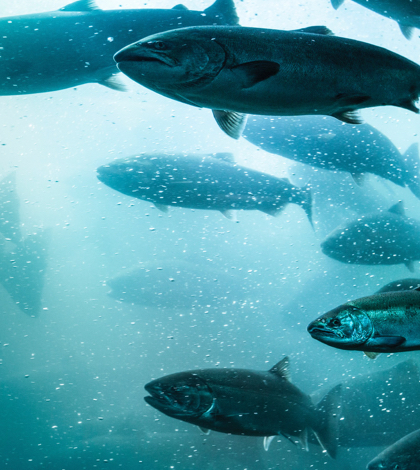Officials from the U.S. Bureau of Reclamation and the California Department of Fish and Wildlife recently briefed members of the State Water Resources Control Board (SWRCB) on this year’s Sacramento River Temperature Management Plan (SRTMP). This year’s temperature management plan points to a release schedule from Lake Shasta that is predicted to support both farmers and fish, most especially the winter-run Chinook salmon.
Though hailed as good news state and federal officials told members of the SWRCB that the schedule will need to be closely monitored. The SRTMP seeks to balance the needs of fish and the needs of farmers’ water deliveries.
“It’s really important to keep the temperature constant and hold it through the season, said Ron Milligan, operations manager with Reclamation. Milligan added that Reclamation staff will perform weekly monitoring of Shasta’s temperatures to be certain that the SRTMP’s terms are being met. If the plan fails to preserve adequate cool temperatures for the salmon, the temperature control plan could change.
“The success of the SRTMP is predicated on how closely operations align with the currently predicted hydrologic and biologic modeling results…,” state Milligan in a letter to the National Marine Fisheries Service last week. “Reclamation stands ready to adjust operations to improve temperature conditions if needed as the season progresses.”
But not everyone is entirely pleased with the plan. The Sacramento River Settlement Contractors (SRSC) has said that allowing temperature management for one species of fish — the winter-run Chinook salmon – to drive water management planning is too narrowly focused, according to the Appeal-Democrat newspaper. The SRSC represents some 450,000 acres in the western Sacramento Valley. Water temperatures that exceed about 56 degrees will cause young salmon to die.
“In our view, it too-heavily focuses on temperature management for winter run egg survival that provides questionable improvements in survival,” said Fritz Durst, president for Reclamation District 108. “The plan does not address other stressors to salmon that account for up to 75 percent mortality while shifting impacts to other species, the environment, farms, and urban areas.”
Those who question the temperature management plan have also questioned whether the proposed release levels were high enough.
“While we support Reclamation, these reduced releases are far more limited than previous years with similar cold-water resources, with Lake Shasta and other reservoirs in Northern California being a nearly full capacity,” said Don Bransford, president of the Glen-Colusa Irrigation District, in a press release. “These lower flows have negatively impacted SRSC water users by keeping the river at lower elevations limiting diversions, and in some cases users not being able to divert at all.”
The Sacramento River has been monitored for temperature control since 1995 following SWRCB issuing Order 90-5. The annual temperature compliance plan is one of the requirement of the order. The plans development requires consultation between Reclamation, the SWRCB and fisheries agencies.
Under the recently presented plan, Reclamation will manage Shasta Dam to achieve temperatures that do not exceed 56 degrees as the daily average at Balls Ferry. To achieve this targeted temperature average flows per month will be 10,500cfs this month, 10,000 cfs in August, 9,000 cfs in September and 6,500 cfs in October.
 California Water News Daily Your Source For Water News in California
California Water News Daily Your Source For Water News in California


